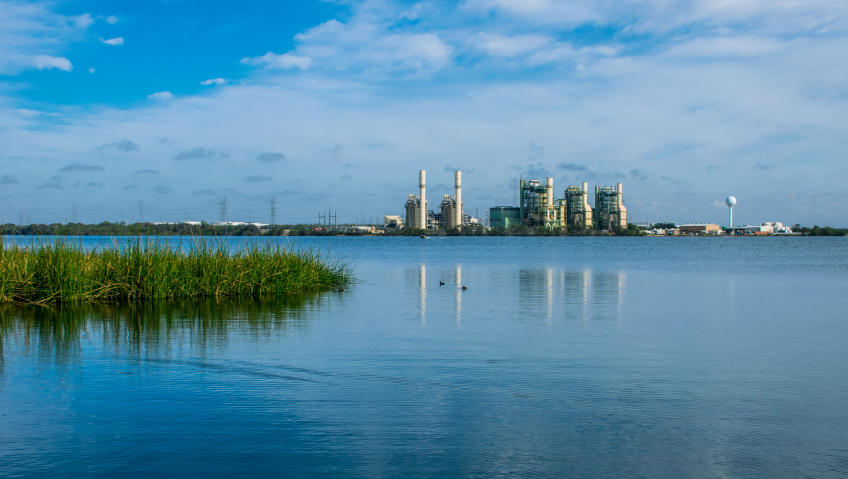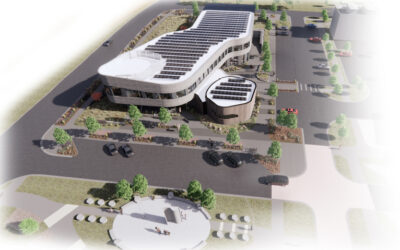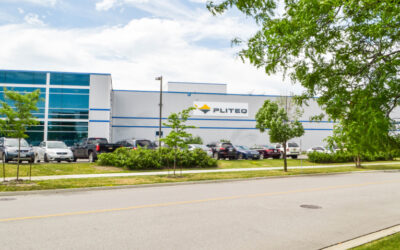FlexEnergy Solutions has a lot to be proud of these days.
With projects across three countries, the U.S.-based energy company has been providing on-grid and off-grid power solutions via its own small gas turbine generators (also called microturbines) and custom-fit heat exchangers for over ten years. In New York, FlexEnergy Solutions just came through one of its biggest challenges yet, proving to itself and the world that, yes, it can make it anywhere.
FlexEnergy Solutions’ products, including the patented Flex Turbine®, provide uninterrupted power distribution for industries like oil and gas, commercial, industrial, and multi-family residential facilities. That was attractive to the residents of the Sheffield Condominium building in Manhattan, who were looking for just that – a power source that would not fail, no matter what the conditions.
New York is the home of some extremely tough environmental regulations, and the Sheffield’s Board managers were looking to exceed those requirements. They were searching for a way to meet New York’s emission reduction targets and boost the efficiency of power generation. The Flex Turbine unit, complete with Flex’s heat exchanger, fit the bill. A single 333 kW combined heat and power unit is now powering critical loads for the forty-nine-story building. The full gas turbine solution brings an annual estimated energy savings of between $200,000 and $500,000 and a resulting payback in fewer than six years.
“We believe this will demonstrate to the state and city of New York what we can do about greenhouse gas and carbon reduction,” said Flex’s Chief Commercial Officer, Doug Baltzer. “Resiliency was a big driver for them. They wanted to be able to run through any disturbances in power and avoid what has been happening with outages throughout the U.S.”
One of those instances he is referring to is the major winter storm that occurred back in February, which took out much of Texas’ power generation capabilities and left most of the state without power. It should be noted that during that ice storm, Flex Turbines delivered power to Flex’s Texas customers without interruption.
“If you become dependent upon a source of power that’s not naturally reliable, you’re going to want to find ways to get through these types of power interruptions. We fit into what the Sheffield condo Board was aiming to do with combined heat and power for efficiency and carbon reduction.”
That project presented challenges, as most projects do. The only real available space Sheffield could offer was in a utility room in an underground garage. It was not the most spacious place for an ultra-modern power generation unit, but the company made it work. The unit, a GT333S model, had to be partially disassembled to be brought in because of some low overhead clearance issues. Also, the exhaust system, which typically runs out the top, was reengineered to fit within the condominium’s specifications.
“So, we had to design a side exhaust exit for our machine. That will become an option (for other projects) going forward, but it was a first time for this particular installation,” said Chief Executive Officer Mark Schnepel. “The exhaust will be fed into a heat recovery steam generator, so they’ll utilize the waste heat coming off the turbine, which will offset their boiler loads.
Baltzer commended the facility managers in that particular project for being so progressive. “Many of them are trying to get every last drop of juice they can from inefficient, unreliable, dirty equipment they bought in the fifties and sixties,” he said, “and here’s the facility’s ownership group, getting out ahead, asking how they can improve over the next decade or so. It’s really exciting for us to lead these forward-thinking groups in figuring out what is next in terms of energy.”
Schnepel said Flex is working with facilities and organizations throughout the globe to incorporate these methods of efficiency and carbon reduction.
Flex managed through the pandemic fairly well, all things considered, because it supplies critical power to industries that cannot shut down, such as medical, manufacturing, and oil and gas facilities. Baltzer said that the leasing side of Flex’s business did well through 2020 in spite of significant reductions to many customers’ capital budgets. When oil and gas took a severe dip in the last year—Baltzer still admits to being surprised at how low prices dropped—he said that clients appreciated that Flex could work with them through the difficult time. Flex’s scalable, clean power solution was what proved most attractive, he said.
“I think a lot of clients fail to really think about power until it’s absent. No matter how low the economy dropped, it would have cost our customers even more to shut completely down,” said Baltzer. “Budgets and expenses were cut throughout most of last year, but it’s coming back now.”
Schnepel said FlexEnergy Solutions was fortunate to have several existing orders that carried it through, with a great deal of inventory built up in preparation of those orders. But now, many businesses are back up in terms of capacity and have taken a lot of that inventory. A couple of years ago, Flex started designing, manufacturing, and selling heat exchangers in addition to its microturbines. Schnepel called this a “bright spot,” for business during the pandemic, because it helped the company maintain operations. He said many companies continued to invest in power generation, which kept Flex quite busy.
“We’re actually having to add labor now, because the turbine side is returning, and the heat exchanger side never really went away,” he explained. “A lot of investment is going into the next generation of power to run on hydrogen, and the pandemic seems to have accelerated this.”
So, business goes on.
“One startling thing has been the price of materials, like the increases in steel and copper and a lot of components,” said Schnepel. “We’ve seen some price increases that we’ve had to balance and stay on top of or else our costs would go up dramatically. It’s taken a lot of negotiation with our suppliers to make sure those prices remain at least close to where they’ve been in the past.”
Now, with the world beginning to see the end of the pandemic, Schnepel said companies are beginning to view energy in a different, more positive way and are adapting to using it differently, which is to Flex’s ultimate advantage. With a North American power grid designed in the 1950s powering twenty-first-century technology, things need to be done differently.
“I think what we’re experiencing in the market is growing sophistication with how businesses look at energy. It’s no longer just a utility bill, but is a substantial part of their operations,” he said. “That’s driving industries to get creative and to find savings through renewables or incentives, or combining everything into one system that can give them resiliency as well as an opportunity to reduce their carbon footprint.”
Baltzer said he is proud to be part of a company that offers new solutions to old technology. FlexEnergy Solutions helps companies and communities rethink what they have been doing with old, inefficient (dirty) power sources and introducing them to technology that helps reduce costs, improve performance, and provides more efficient operations.
“Customers are asking FlexEnergy for solutions that integrate with new renewable and clean energy sources and how we can become a part of the customer’s microgrid solution,” he continued. “This is how a lot of different sources of energy get combined into one resilient solution. Customers are being driven by the need for clean energy options – for the ability to tie in with wind and solar, and to maximize all sources available for a carbon-neutral solution.”
What that means is that with Flex’s technology, a company can optimize their power sources. They can access solutions to seamless connections to clean energy sources that combine microturbines, wind, and solar instead of strictly getting electricity from unreliable utility grids.
“We feel we can play into that larger picture with the customer who wants to use everything available, and we’re the ones capable of connecting all sources into one,” Schnepel added. “The way the world is going, energy diversity is becoming increasingly important – utilizing different sources of energy such as solar and wind power, battery storage, and generators to help maintain battery charge when the sun isn’t shining or the wind isn’t blowing. This diversity will help companies and communities take advantage of different rates rather than just having to rely on what the local power company charges at any given time.”
In the area of power solutions, FlexEnergy Solutions offers services for on- and off-grid power, unique gases, and cogeneration, among others. The company sells and manufactures high temperature heat exchangers for a diverse range of end applications as well as for gas turbine recuperation.













